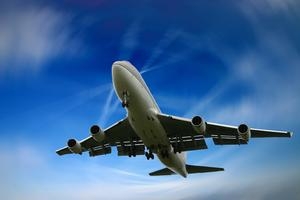I was falling asleep on my flight to London from Tel Aviv when an overly-calm voice came over the tannoy system: ‘If there is a doctor on board, would you please make yourself known to a member of the cabin crew?’ After declaring I was a doctor and asking how I could help, the steward pointed in the direction of the passenger and explained he was feeling breathless.
The gravity of the situation suddenly dawned on me as I could see that the patient was visibly unwell. We were 30,000ft in the air and I was alone with no support, but I tried to approach the clinical scenario as I would in hospital – with an ABC approach. I quickly ran to my backpack to grab my stethoscope and started my examination. His airway was patent as he could speak. However, he was very breathless, and needed several breaths to complete sentences. This patient needed high flow oxygen immediately. Fortunately, there were oxygen canisters available with non-rebreather masks – a piece of equipment I was familiar with. Unfortunately, this was the only medical kit on the plane. Even worse, as the passenger became increasingly breathless, it became very apparent that the oxygen canister was failing to provide oxygen. The tension of the emergency was growing as we had two further failed canisters. Finally the fourth tank worked, providing the passenger with some respiratory relief. His respiratory rate was worryingly 65. On auscultation he had mild bilateral wheeze and reduced air entry in the upper left zone. However, the loud noise of the airline engines made auscultating extremely challenging.
Could he make it to London in his current state without going into respiratory arrest? I was unsure.
I took a brief medical history. He was a 24-year-old British man who had been treated for pneumonia in an Israeli hospital that morning and had received two doses of oral amoxicillin. He had already contracted pneumonia on four previous occasions that year. The patient had left the hospital to fly to London because he had no health insurance and could not afford the medical expenses for further treatment. The most likely differential was pneumonia, however I could not rule of pneumothorax or pulmonary embolism.
With no investigations or any other treatment available, I could only help the patient by continually reassuring and reassessing him. To make matters worse, I was approached by a member of the crew who informed me that we were still 80 minutes from London and that if I felt it necessary, we could land in Brussels in 20 minutes.
It was at this point that I looked over at all the families on the plane waiting to arrive in the late hours of the night, followed by a glance at the sick passenger. Could he make it to London in his current state without going into respiratory arrest? I was unsure. I advised the crew that I would reassess him, and come to a final verdict. During my examination his respiratory rate and heart rate had increased to 80 and 125, respectively, which confirmed my decision – we were going to have to make an emergency landing. As we were making our descent, the passenger was very distressed. When we landed 20 minutes later, paramedics ran onto the plane and I gave a handover to the leading doctor. By now the patient was visibly exhausted and mumbling and I was sure I had made the correct decision.
The next day I contacted the patient, who was being treated for pneumonia at a hospital in Brussels. I did worry he would resent me for dropping him off in a foreign country. I was happy and relieved to hear that the passenger was extremely thankful for my actions. He has since flown home to London to get free treatment and is on the road to recovery.
Dr Darren Zurawel is an FY2 doctor in London who is planning to be a GP
Pulse October survey
Take our July 2025 survey to potentially win £1.000 worth of tokens













